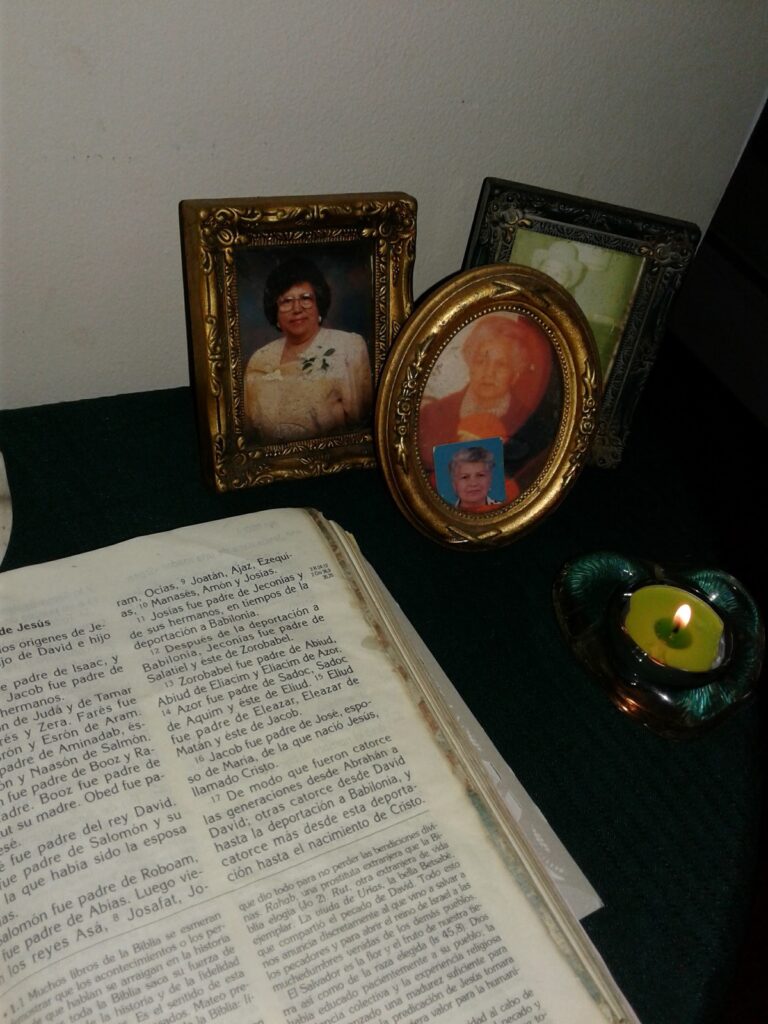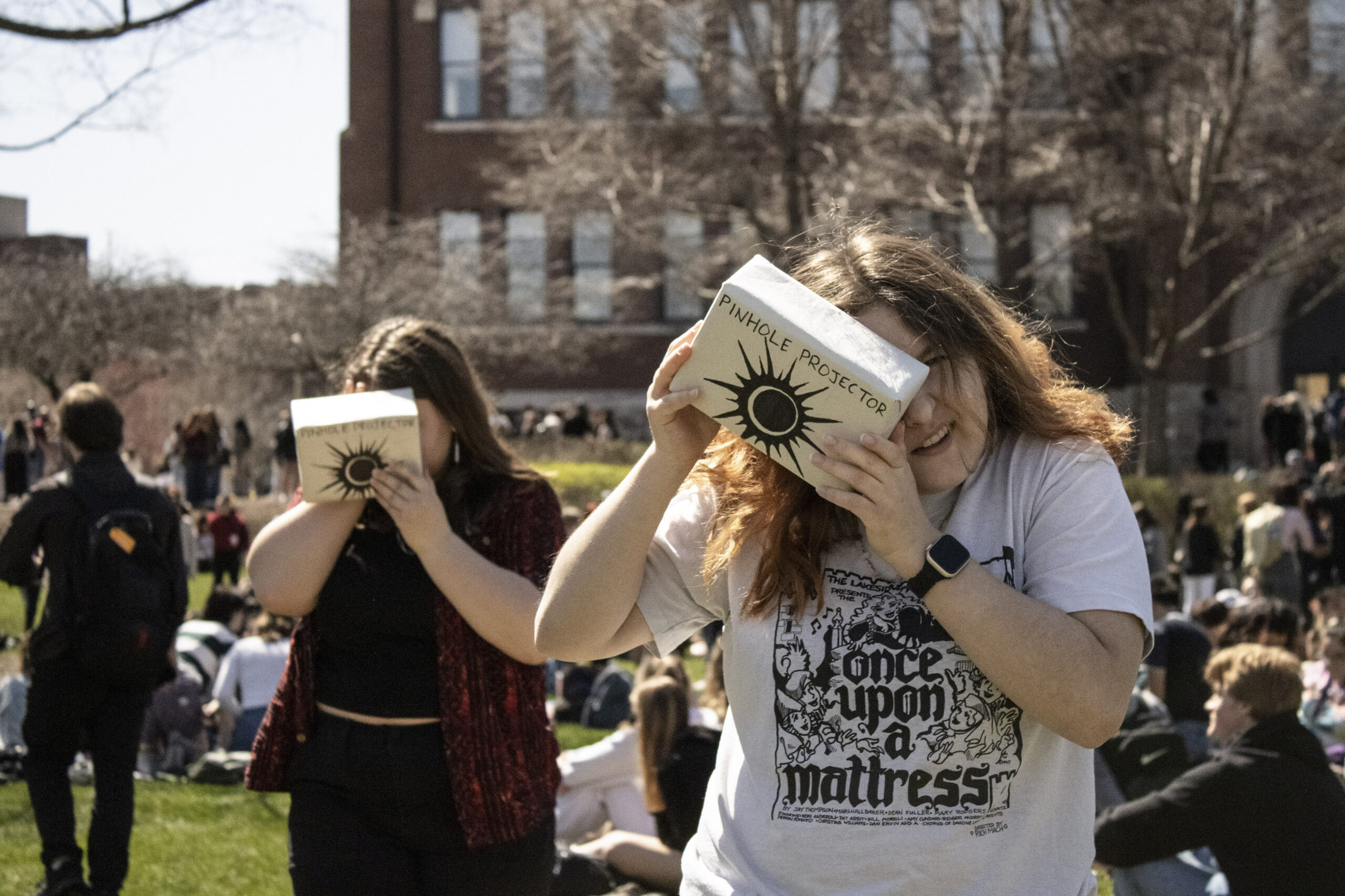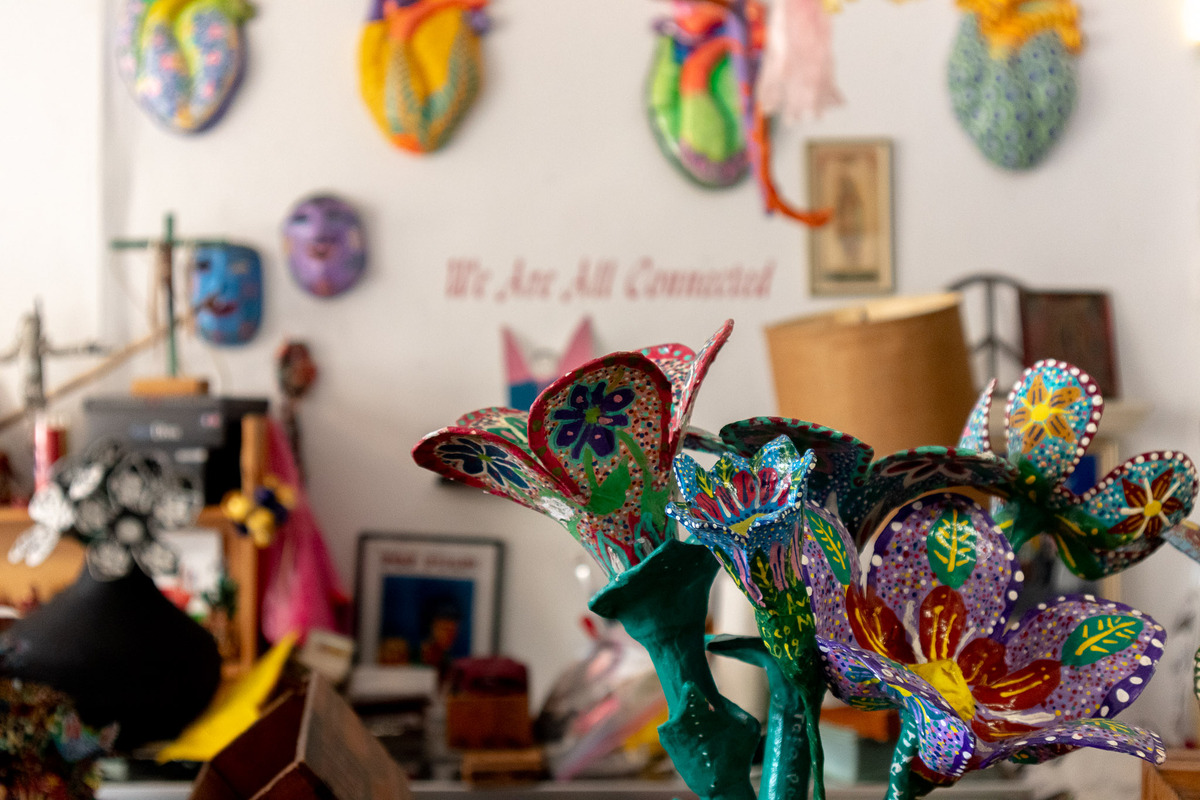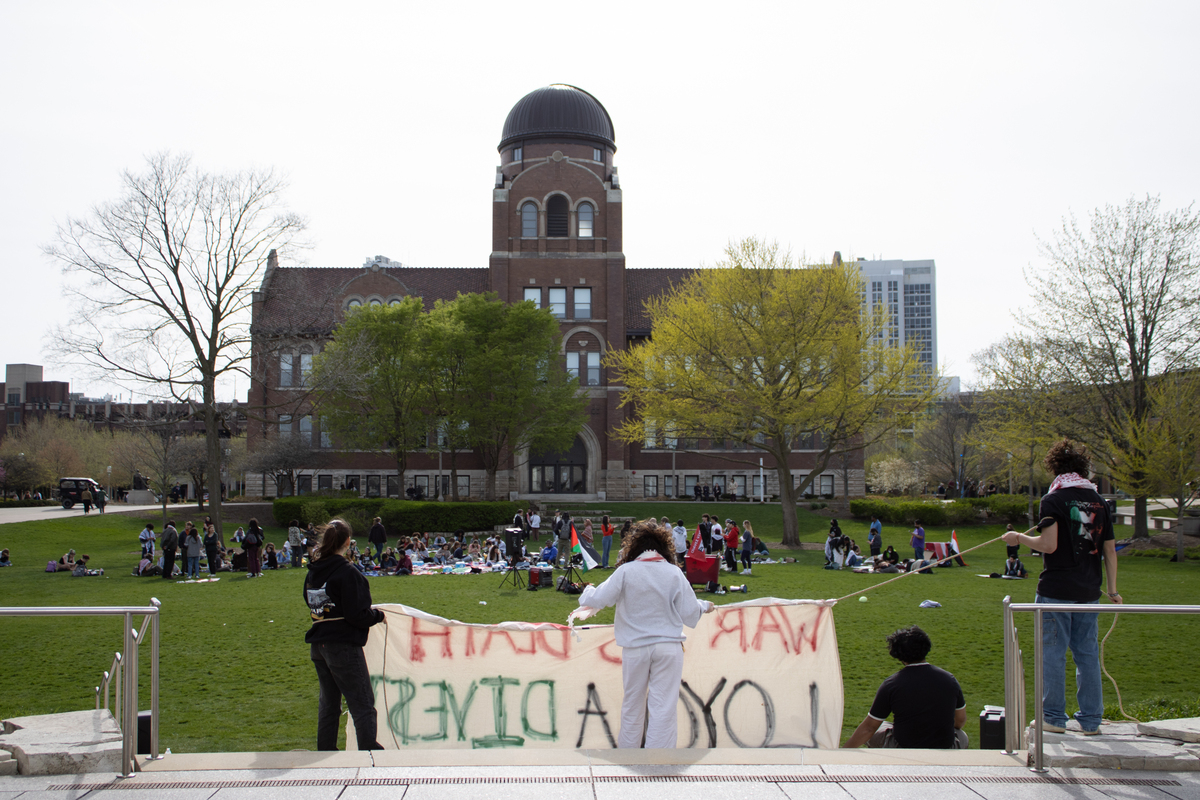In the Día de los Muertos edition of her column, deputy arts editor Angela Ramírez finds herself playing “Amor Eterno” on repeat.
La Ramírumba: Love and Loss with Juan Gabriel’s ‘Amor Eterno’

Unlike most of my Latin friends, I don’t have any fond childhood memories of Día de los Muertos.
In my house, we didn’t have a grand ofrenda adorned with colorful sugar skulls and sunny marigolds featured in Disney’s “Coco.”
However, my mom keeps photos of my grandparents on a tiny, walnut-stained table underneath a portrait of the Virgin Mary in our house — year-round. Tealight candles surround them, and she’ll occasionally leave water out for their visiting spirits to enjoy.
She has done this for as long as I can remember.
Luz –– my mom, my “light” –– didn’t grow up celebrating Día de los Muertos in Colombia. Still, she made a concerted effort to teach her multicultural children the essence of the holiday –– the imperative nature of remembering the dead.
I have a fond memory of her humming along to Juan Gabriel’s “Amor Eterno” in the kitchen –– a song I personally associate with the reflective, early November days.
Born Alberto Aguilera Valadez, Gabriel was born in Michoacan, Mexico Jan. 7, 1950. “El Divo de Juarez,” as he was lovingly called, was the youngest of 10 children, according to Rolling Stone.
At age four, his mother left him in an orphanage in Juarez, Mexico. To make a living for himself, a young Gabriel would sing original songs in the streets while selling tortillas. “No Tengo Dinero,” a song he released at 21, would be his first hit song.
After surmounting an array of monetary and personal issues, Gabriel regained his footing in 1971 after signing a deal at RCA Records. He chose the pseudonym Juan Gabriel to honor both his childhood boarding school teacher Juan Contreras and his father, Gabriel, who was inducted into a psychiatric hospital when the singer was a child.
From that point forward, Gabriel dove headfirst into the mariachi, ranchera, pop and disco genres. Earlier this year, he ranked 172 for Rolling Stone’s list of The 200 Greatest Singers of All Time.
The singer’s 1984 release “Amor Eterno” is the only song that comes to mind when I think of Día de los Muertos.
A timeless ballad of grief and love, the song was written by Gabriel and concerns his sentiments towards his mother, who died when he was 13.
Accompanied by wailing violins and the undying strum of a guitar, the song expresses a deeply rooted want — a need — for his mother to come back to life.
Gabriel’s 1990 performance of “Amor Eterno” in Mexico City’s Instituto Nacional de Bellas Artes is, easily, one of my favorite live displays of talent.
Every word, every wail that escaped him, carried with it an almost tangible anguish. His eyes longingly look into the crowd from time, glistening in the spotlight. A backing mariachi only amplified the performance’s emotional heaviness, with horns and strings that seemingly resonate in the air as the crowd sings along to the chorus.
“Como quisieras, ay / Que tú vivieras / Que tus ojitos jamás se hubieran / Cerrado nunca y estar mirándolos,” Gabriel cries.
Fit with perfectly coiffed hair and an undeniably grand stage presence, Gabriel cemented himself as one of the most significant Mexican artists to grace the stage with “Amor Eterno” en vivo.
The song has been covered by other famous Hispanic artists but perhaps most famously by Rocío Dúrcal –– “La Española Más Mexicana.”
Her cover is the one I’d hear most often on Amor 106.7 FM –– the resident, all-Spanish radio station that would play in my house every morning in my youth.
“Amor Eterno” is what played in my head when celebrating my Tia Mariana’s life days after her death. It is also what played in my headphones when planning a joint ofrenda for my friends and I –– a project I’ve always wanted to execute and am honored to share.
Cultivating more ofrenda planning and memory making to the tune of “Amor Eterno” is a goal I hope to carry in my time in the land of the living.
“La Ramirumba” is Deputy Arts Editor Angela Ramirez’s recurring Latin music column.
Featured image by Angela Ramírez / The Phoenix










